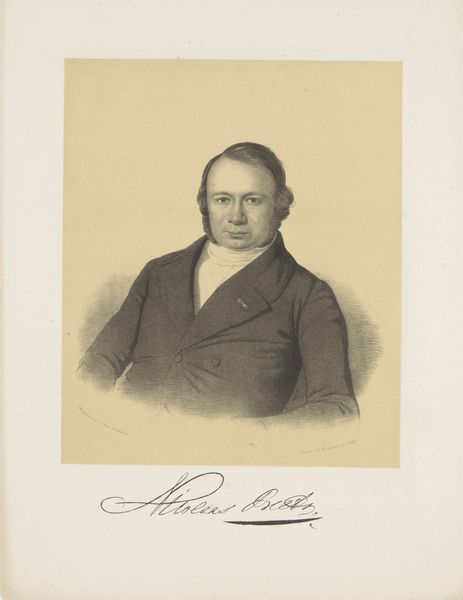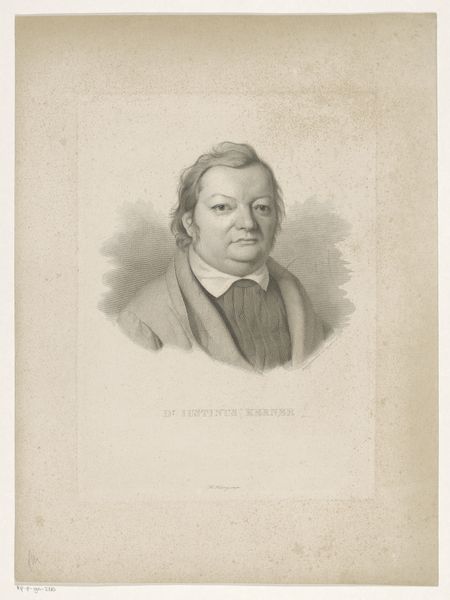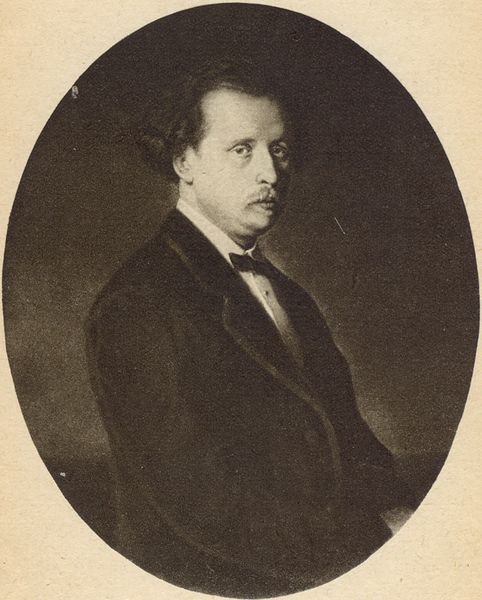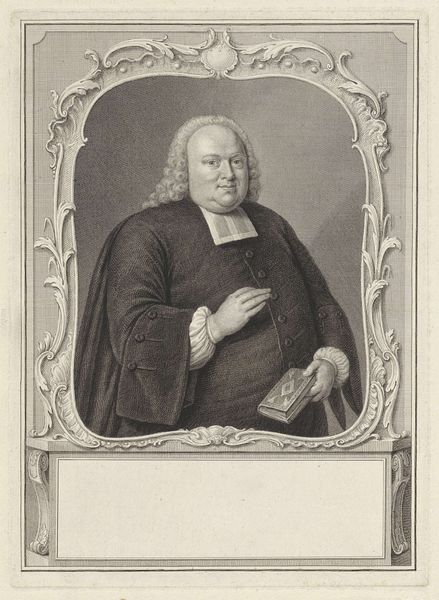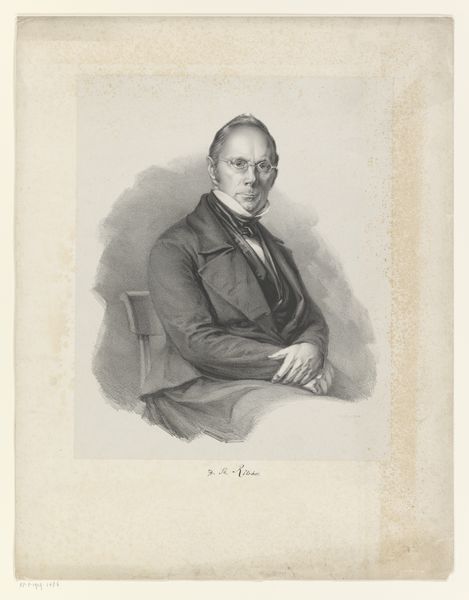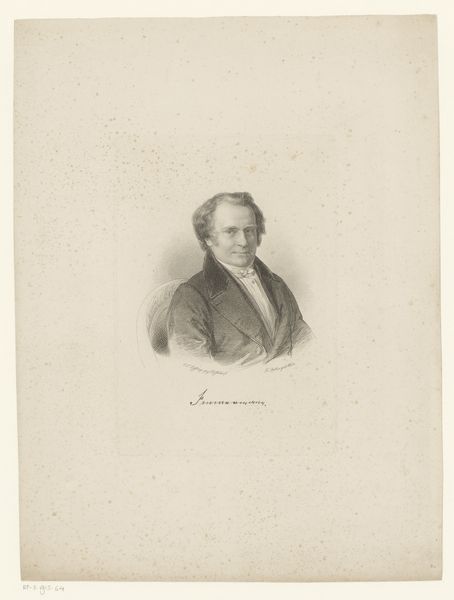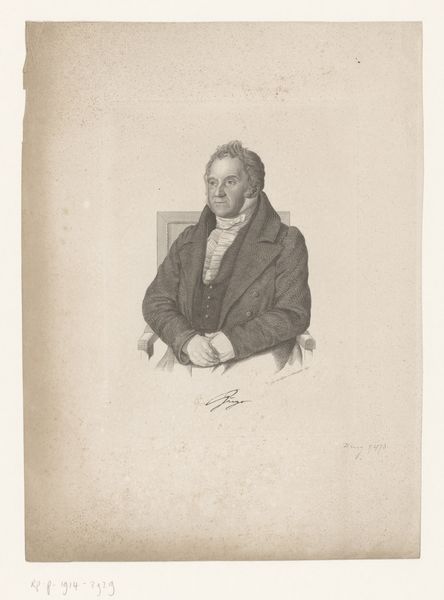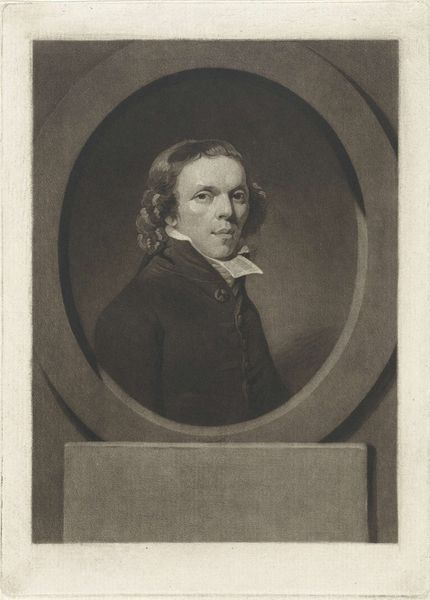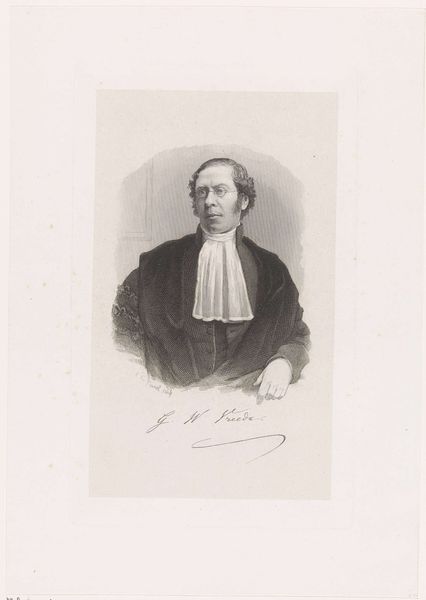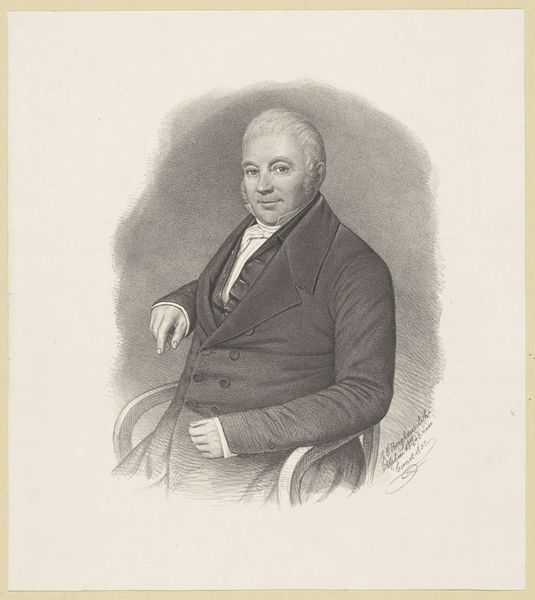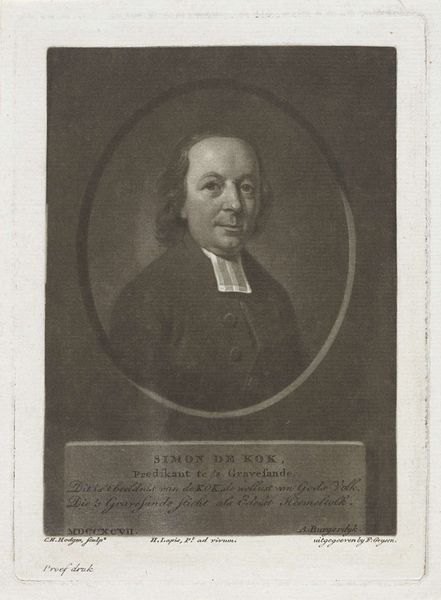
Dimensions: height 449 mm, width 295 mm
Copyright: Rijks Museum: Open Domain
Curator: Dirk Jurriaan Sluyter rendered this portrait of Nicolaas Beets, probably sometime in the 1860s or 70s, during Beets' later years. The Rijksmuseum is lucky to have it! Editor: There’s something immediately striking about the composition—the somber tones, the sitter's direct gaze. It feels intimate, yet formal. Curator: Yes, Sluyter manages to capture that delicate balance of public persona and private intellect so typical of the era’s Dutch elite. Beets was, after all, a prominent theologian and author writing under the pseudonym Hildebrand. Editor: The use of graphite really lends itself to the detailed rendering of his face and the fall of the dark cloth of his jacket. Note the way light catches the soft volume of his features; it's all in service of conveying a sense of gravity and intellect. Curator: The choice to include the exterior landscape through the window, along with his book and writing materials, wasn't accidental. They provide social context, situating Beets not just as an individual but as part of a world of intellectual pursuit and religious reflection, common aspirations of his time. Editor: True, and that juxtaposition with nature and the soft light coming through the window gives depth to an otherwise straightforward portrait, pushing into something almost dreamlike. Curator: I think this hints at a move away from strictly realistic depictions. Instead, this offers a sort of romantic ideal of intellectual life. You have this sense that the window opens to something larger. Editor: Ultimately, it is Sluyter's attention to detail—his subtle hand—that captures not only Beets’ likeness, but also that critical sense of Romantic sensibility of the Dutch Golden age. Curator: Sluyter provides such valuable visual documentation, and insight into the cultural and intellectual milieu in which Beets lived and operated. I come away feeling as though I have insight not only into Beets as an individual, but also into the socio-political climate in which he wrote and preached. Editor: For me, it’s a compelling study of how tonal shifts and structured composition can capture a complex emotional interior, making what might otherwise feel historical very immediate and alive.
Comments
No comments
Be the first to comment and join the conversation on the ultimate creative platform.


